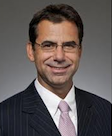
Operations Management–Six Key Trends In Corporate Sustainability
 Here’s a new study from Ernst & Young LLP about risk management and sustainability. I’m not surprised with the results. “At the same time, the study finds, companies are not adequately aligning risk response to the scale of sustainability challenges.” Much of human psychology consists of ignoring possible bad news until it becomes a crisis.
Here’s a new study from Ernst & Young LLP about risk management and sustainability. I’m not surprised with the results. “At the same time, the study finds, companies are not adequately aligning risk response to the scale of sustainability challenges.” Much of human psychology consists of ignoring possible bad news until it becomes a crisis.
The Ernst & Young / GreenBiz Group study – 2013 six growing trends in corporate sustainability – reveals that companies are increasingly connecting the dots between risk management and sustainability by making sustainability issues more prominent on corporate agendas. Driven by trends such as extreme weather events and risks to natural resources, among other factors, the shift is evidenced by the increasing involvement in sustainability-related issues of shareholders and the C-suite. At the same time, the study finds, companies are not adequately aligning risk response to the scale of sustainability challenges. Conducted in late 2012, the Ernst & Young LLP study is based on a comprehensive survey of sustainability leaders and explores developments in corporate sustainability programs. The report provides statistics around six trends:
1) The “tone from the top” is key to heightened awareness and preparedness for sustainability risks.
· More than half of the companies surveyed indicated alignment on both mandated and voluntary sustainability disclosures. Engagement of the CEO and Board are critical for achieving alignment with sustainability and financial efforts.
· The largest proportion of companies who reported total alignment with financial and sustainability reporting – 36 percent of companies – reported that both the CEO and board of directors are fully engaged. Of the above companies, 86 percent said sustainability was embedded in strategic planning and capital budgeting, 70 percent said their mission statement included social and environmental issues, and 68 percent said their organization regularly discussed sustainability-related risks and opportunities with investors and other stakeholders. These numbers represent a high level of engagement in our survey sample.
2) Governments and multilateral institutions aren’t playing a key role in corporate sustainability agendas.
· Instead, respondents said consumers have significant influence on advancing sustainability on a global basis, with 61 percent citing them as a driver.
3) Sustainability concerns now include increased risk and proximity of natural resource shortages.
· 51 percent said they anticipate their company’s core business objectives to be affected by natural resource shortages such as water, energy, forest products and rare earth minerals / metals, in the next three to five years.
· Water (76 percent) was ranked by survey participants as the number-one cause for concern among resources “most at risk.”
4) Corporate risk response is not well paired to the scale of sustainability challenges.
· Even though 79 percent of respondents said sustainability risks were incorporated into their enterprise risk framework, only three in 10 companies said they had run scenario analyses, and 36 percent said they had no plans to do so.
5) Integrated reporting is slow to take hold.
· However, 43 percent said integrated reporting would be “extremely” or “very” helpful in such things as breaking down the silos, involving the CFO / finance team in sustainability-related initiatives and reporting, and validating the existence and importance of non-financial information reporting.
6) Inquiries from investors and shareholders are on the rise.
· Half reported that they are receiving an increase in the number of sustainability-related inquiries from investors and shareholders over the past 12 months.
· The average proxy proposal received 21 percent of investors’ votes in 2011, up from 10 percent in 2005, reflecting a high level of interest and support.
“Across corporate America, executives are increasingly focusing more attention on the risks and opportunities around sustainability” said Steve Starbuck, Americas Leader, Climate Change and Sustainability Services, for the global Ernst & Young organization. “However, most companies still are not actively engaging in scenario planning, which means company awareness has not translated into the necessary preparedness that would minimize risk and maximize opportunities for their organization.”







